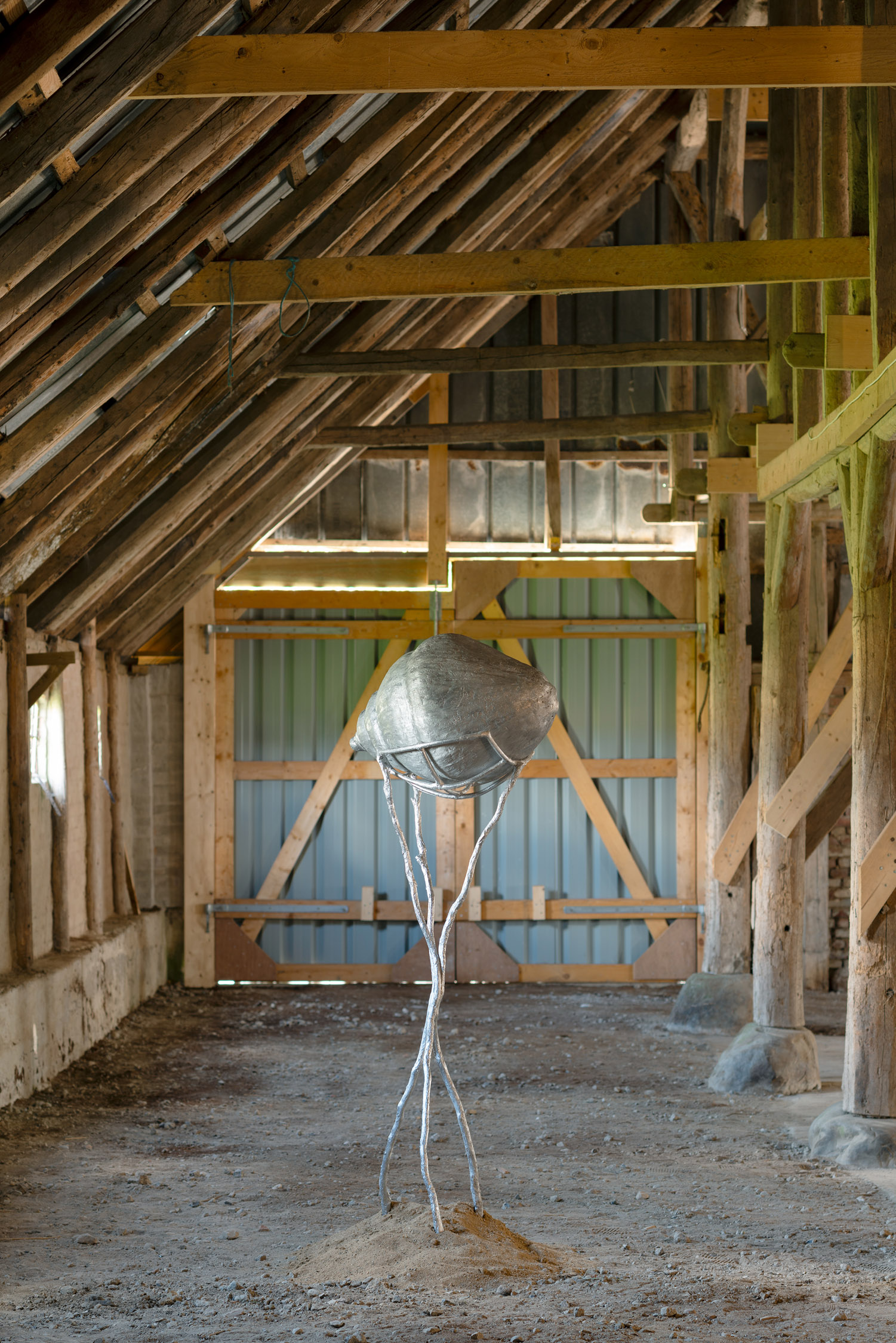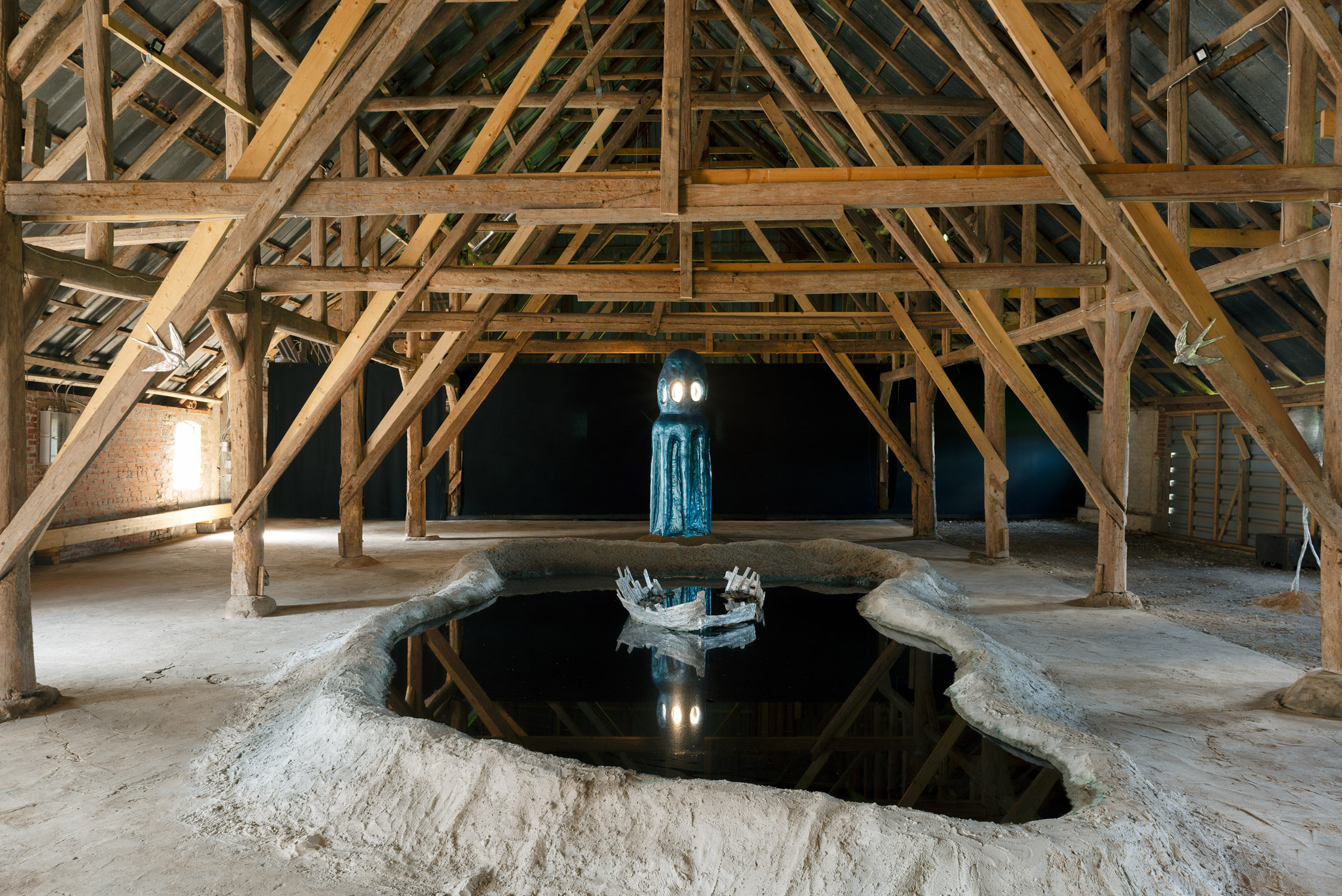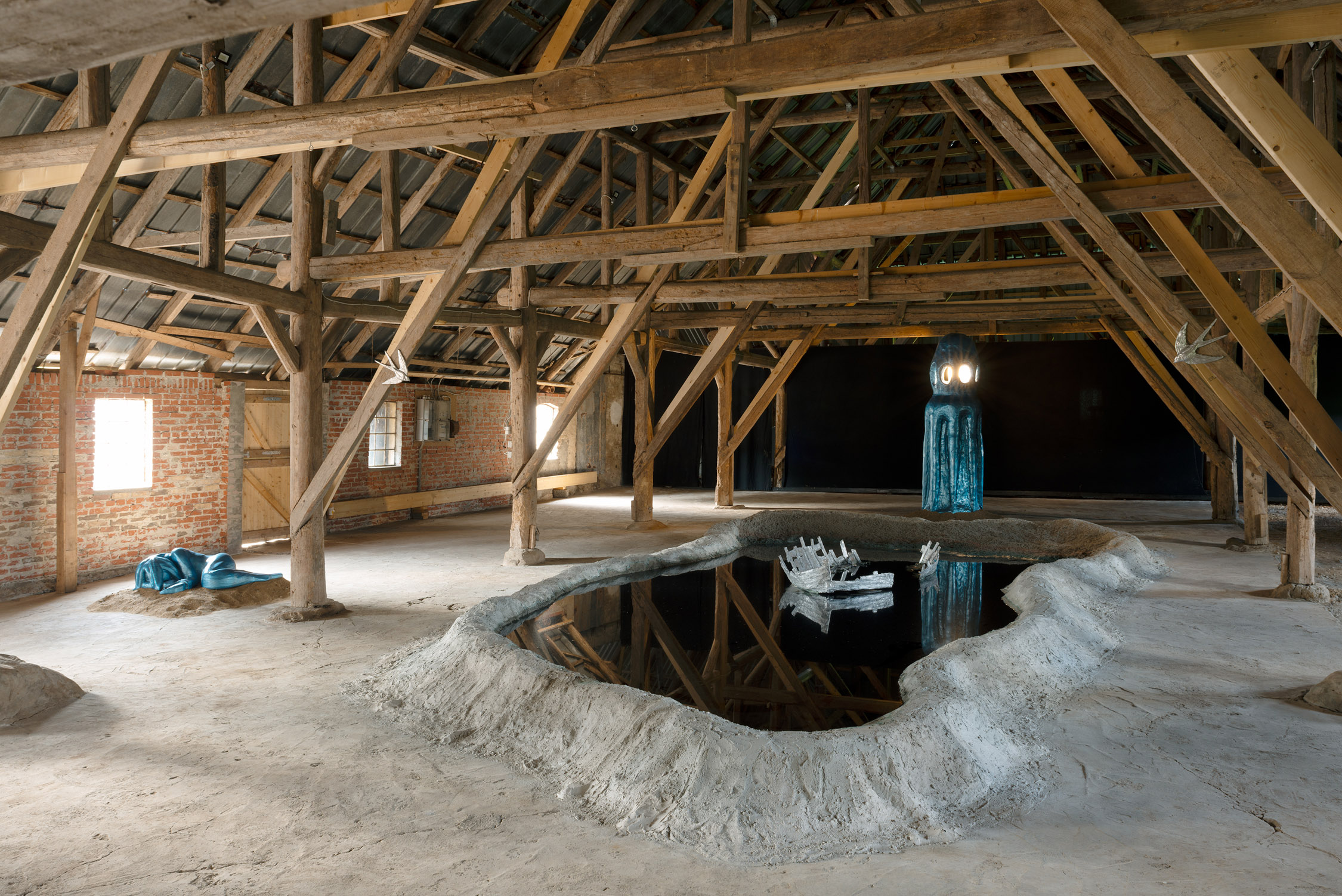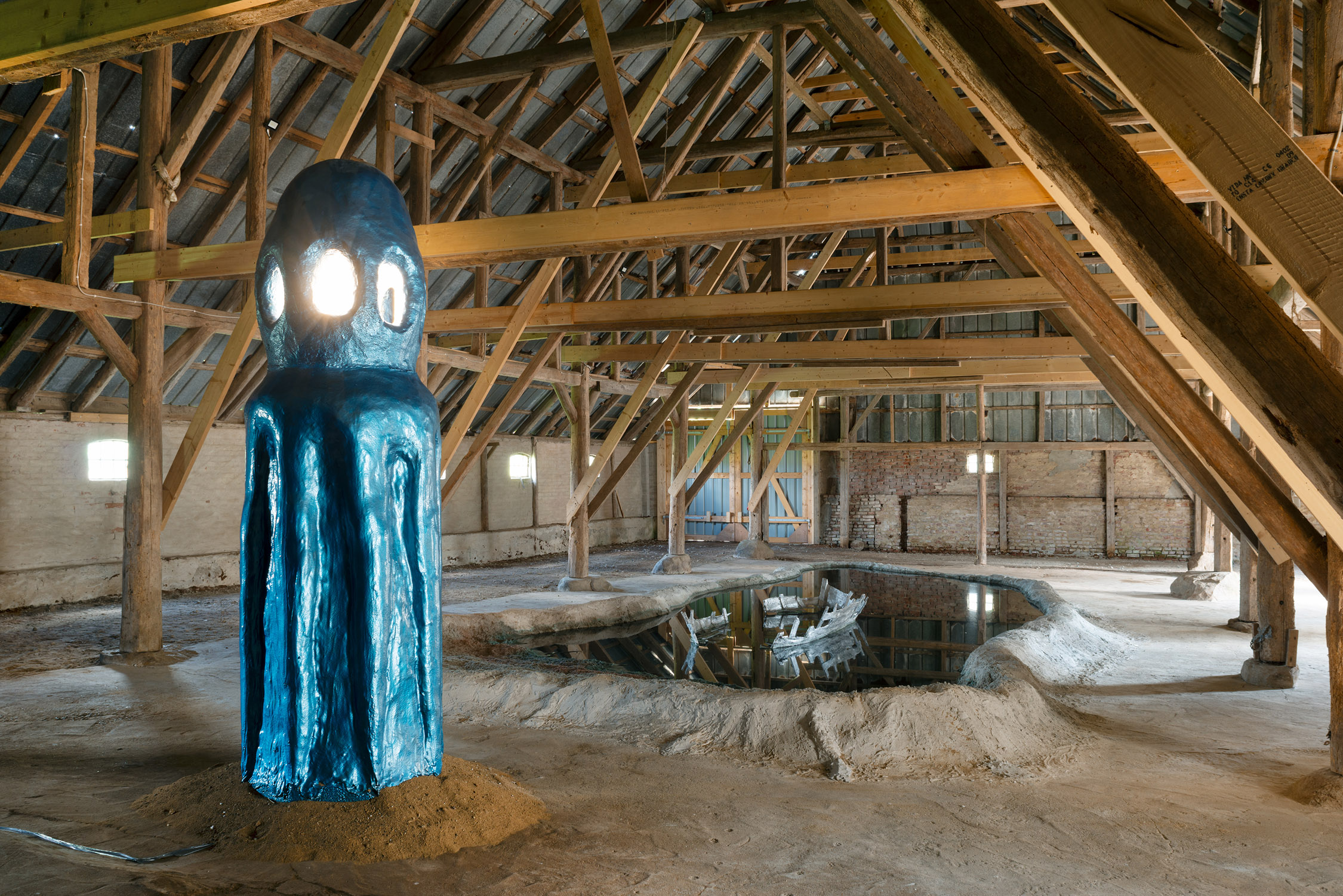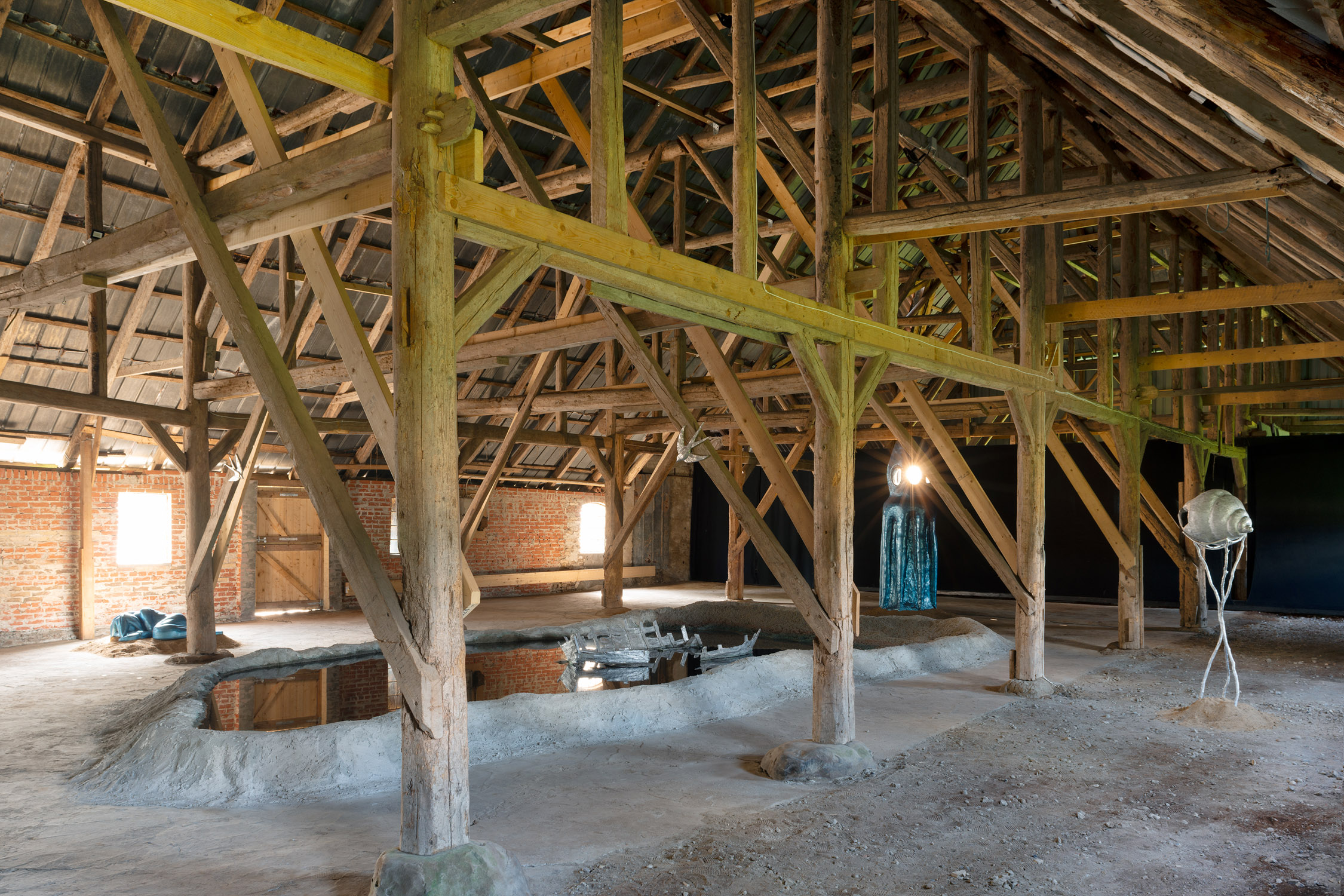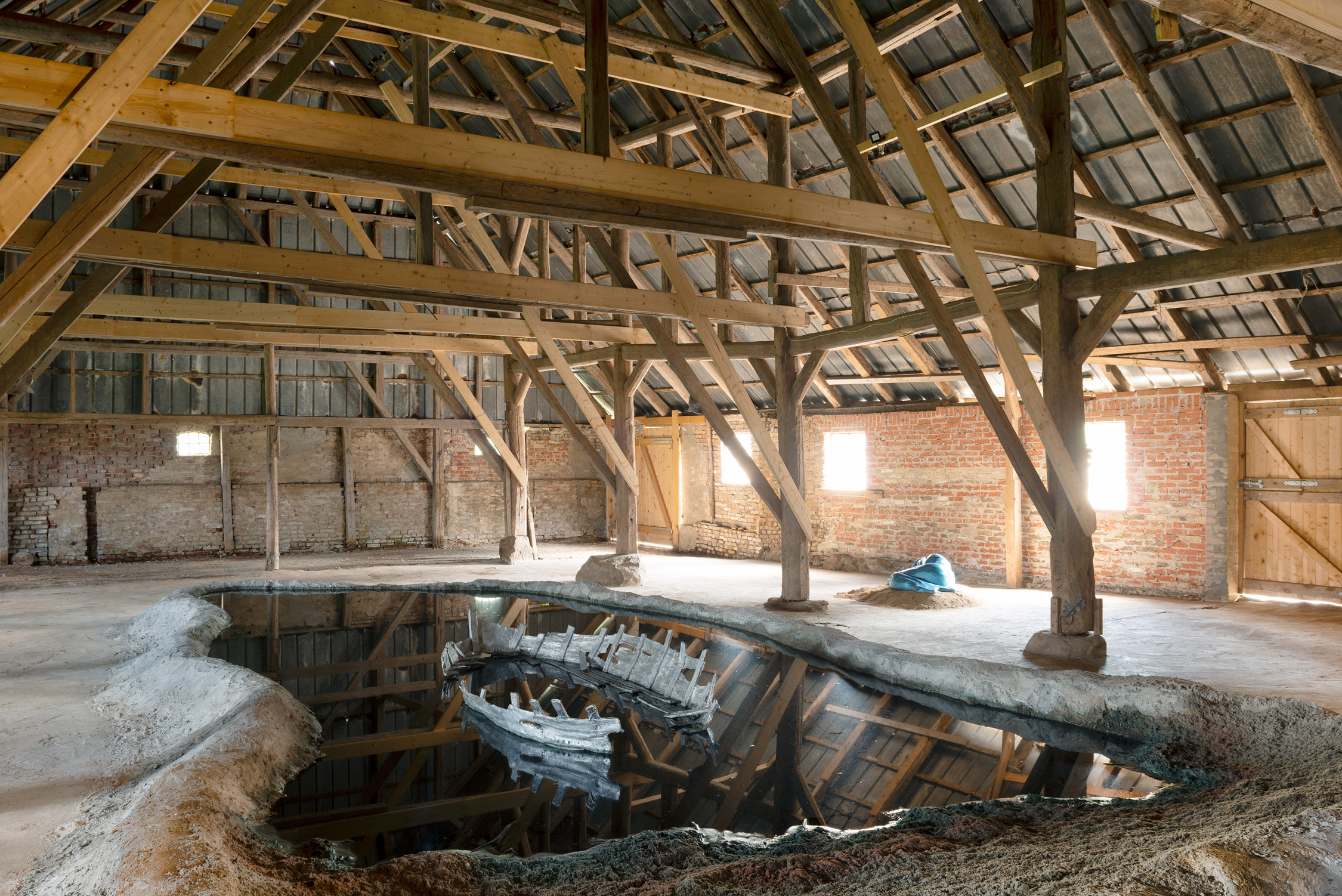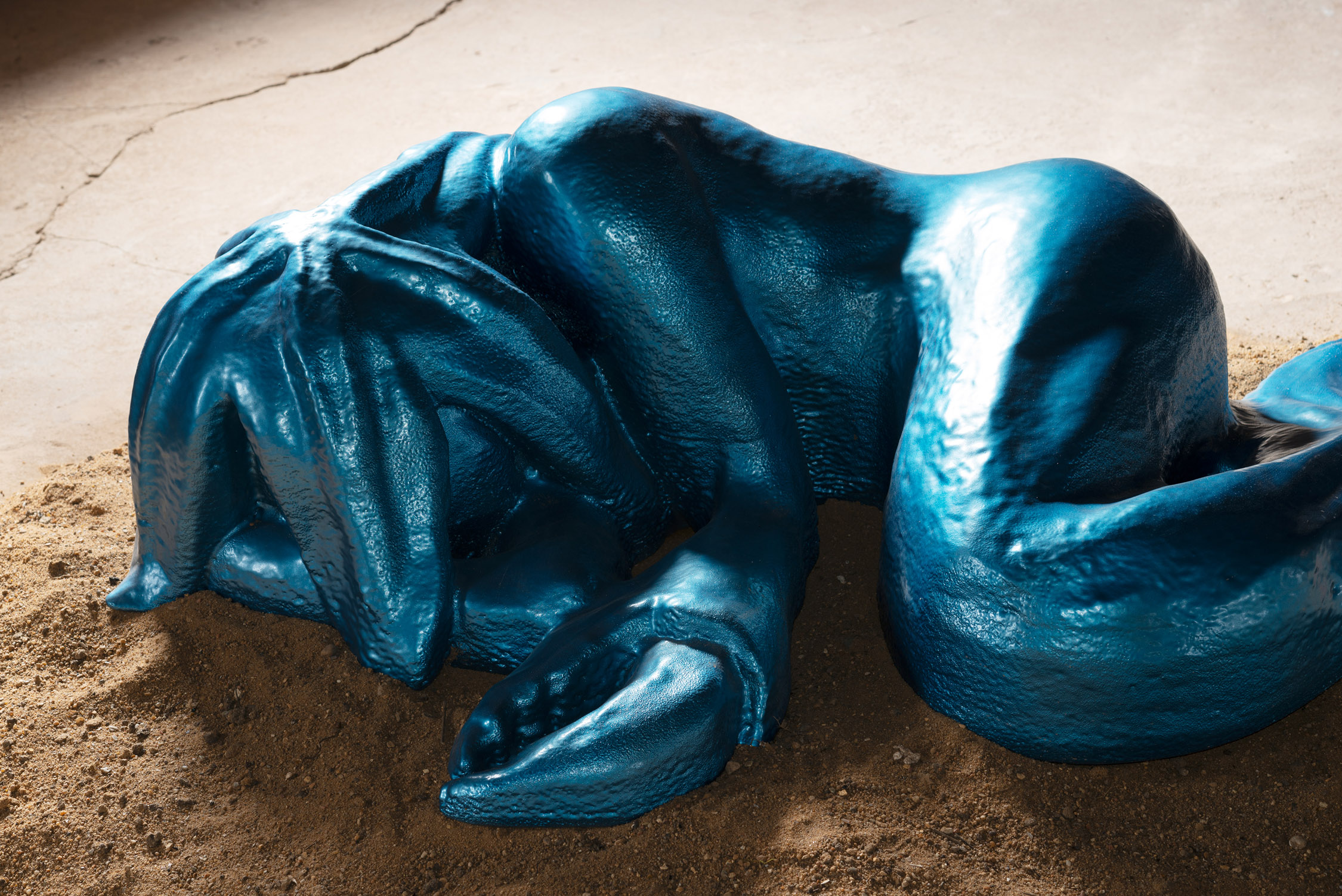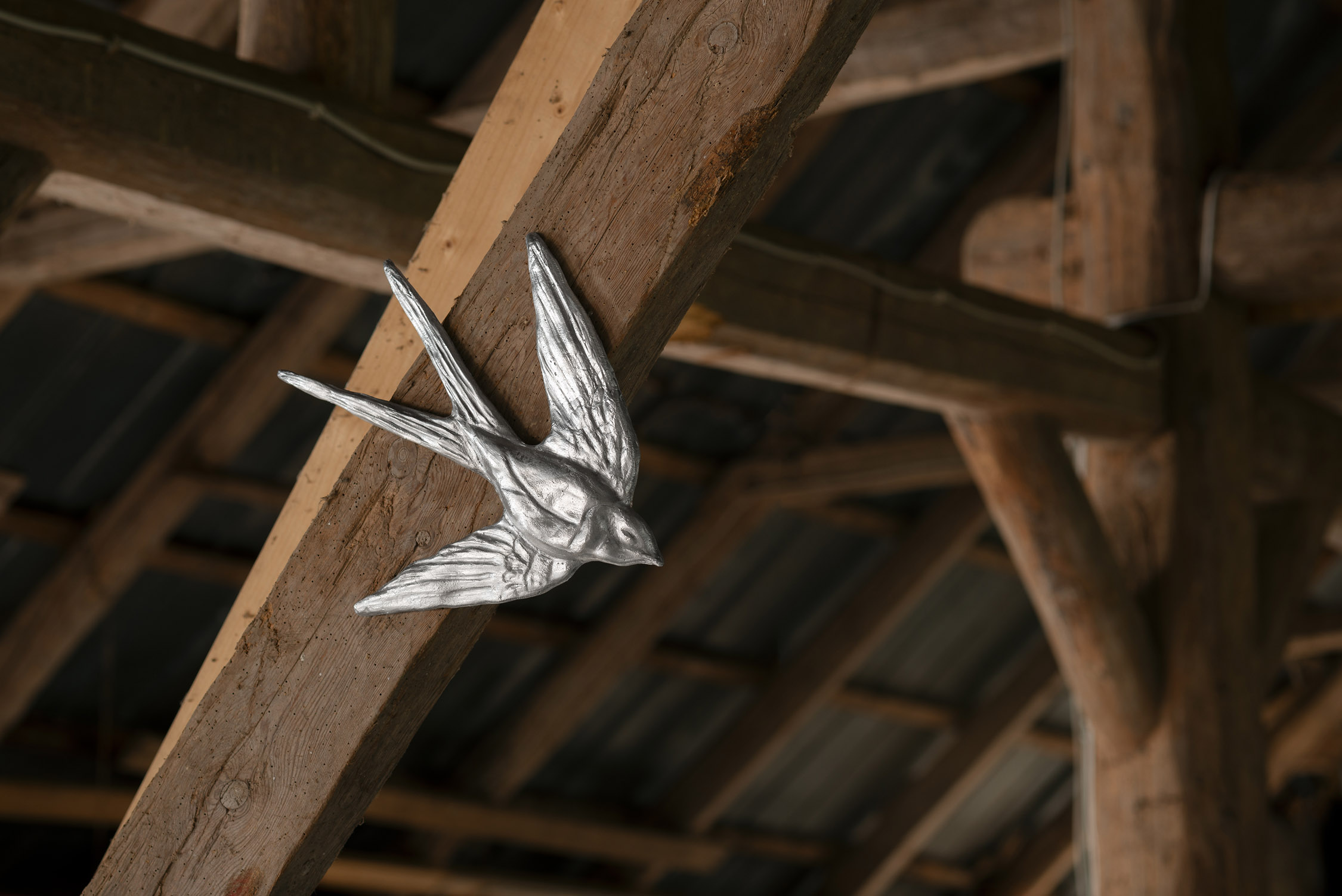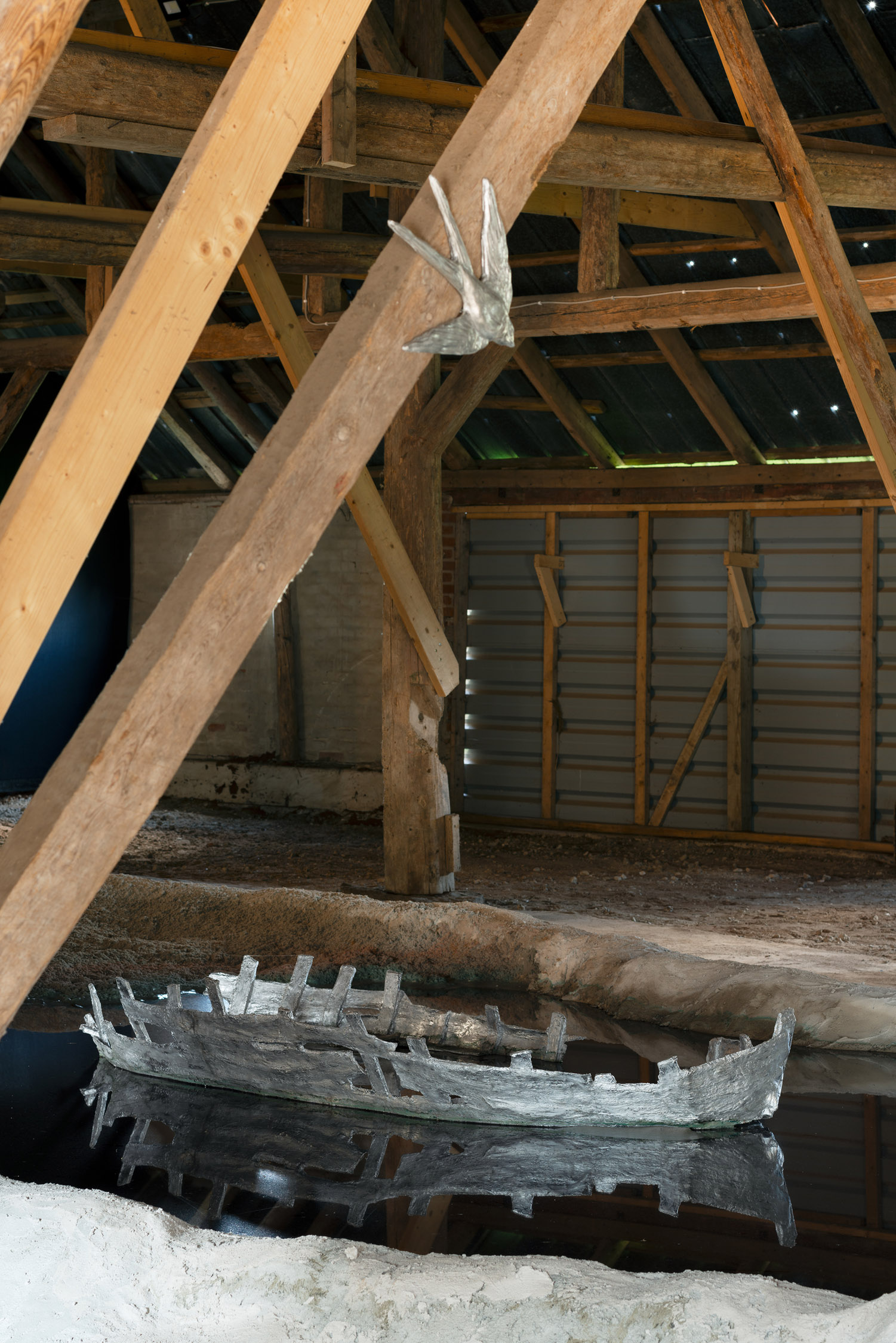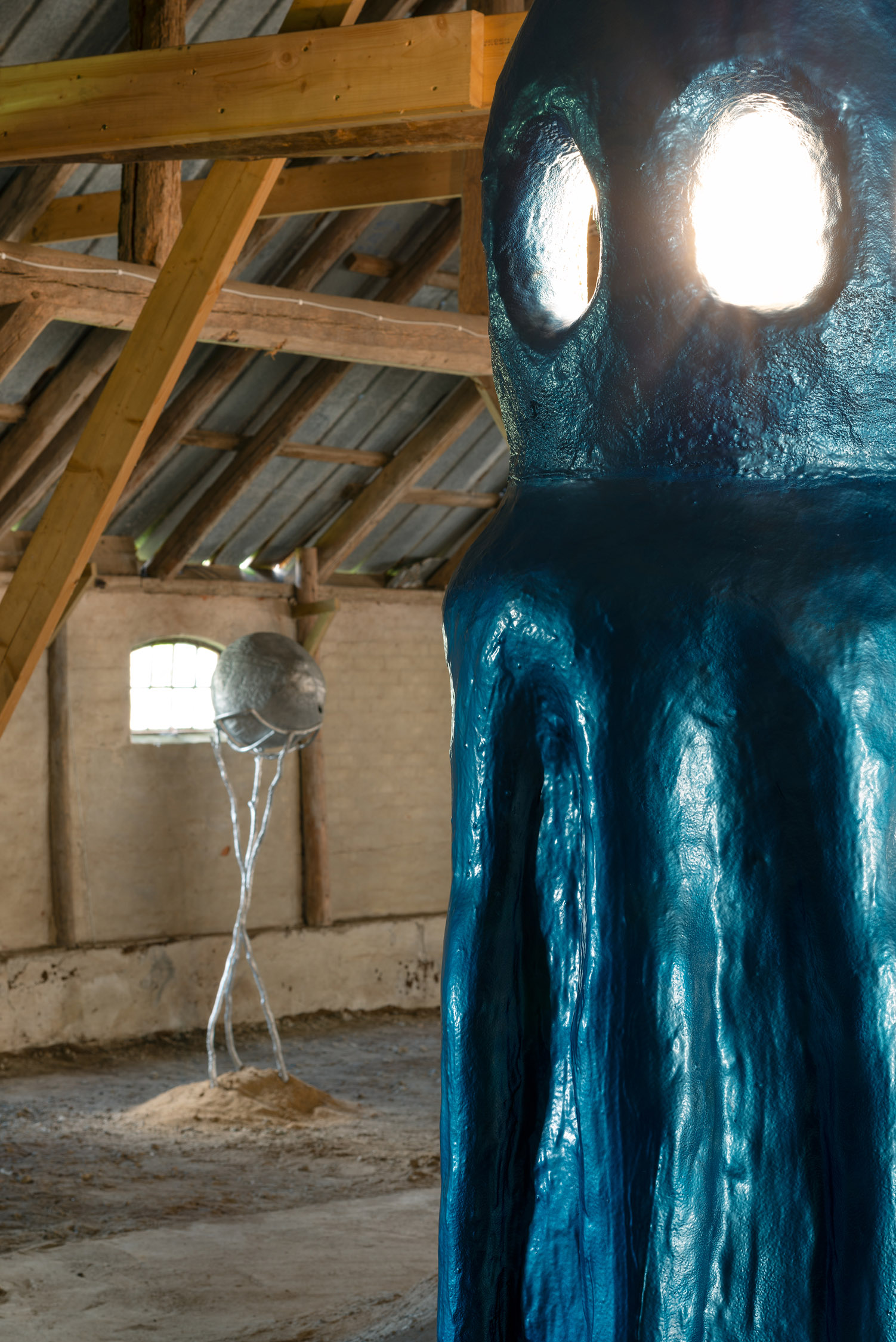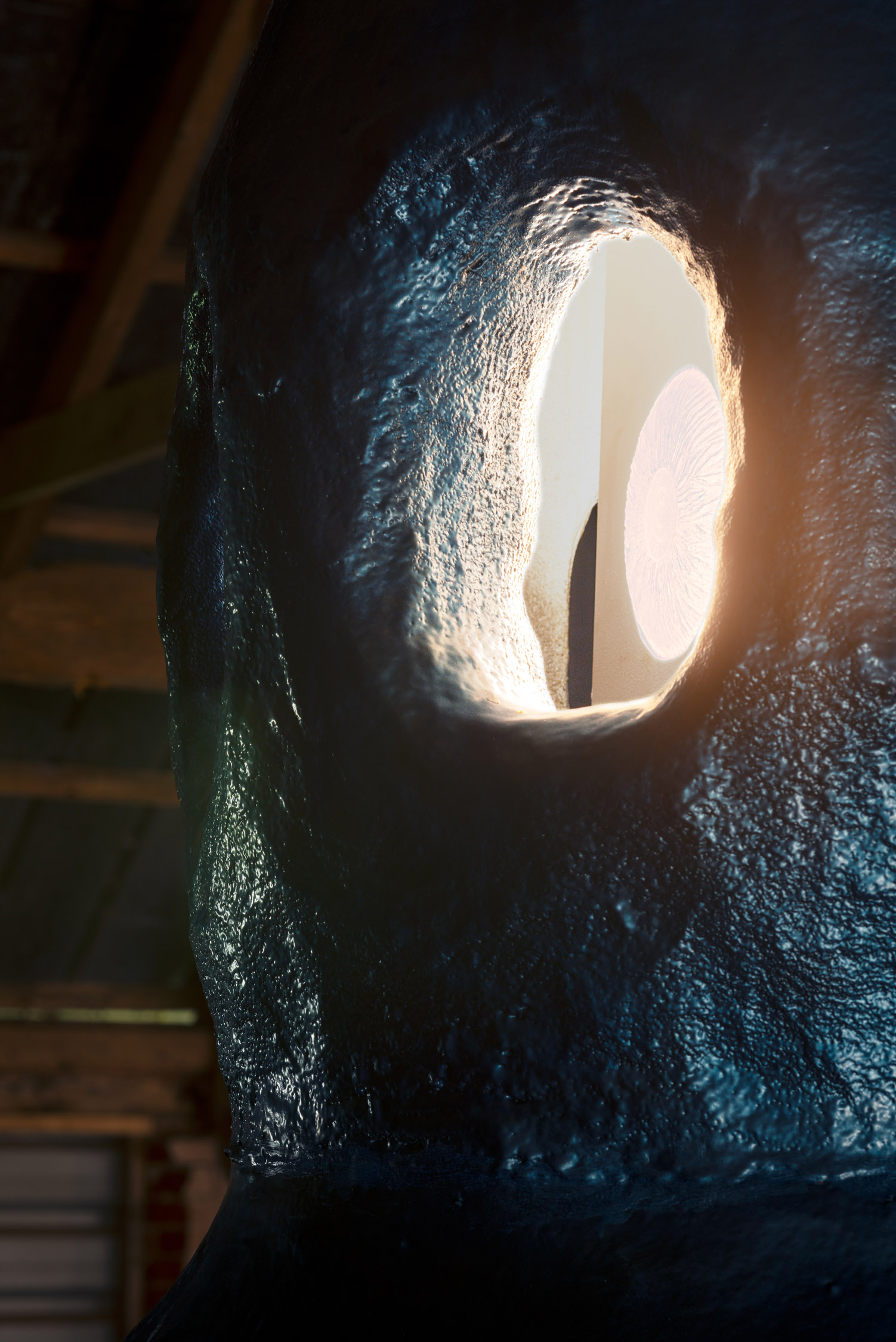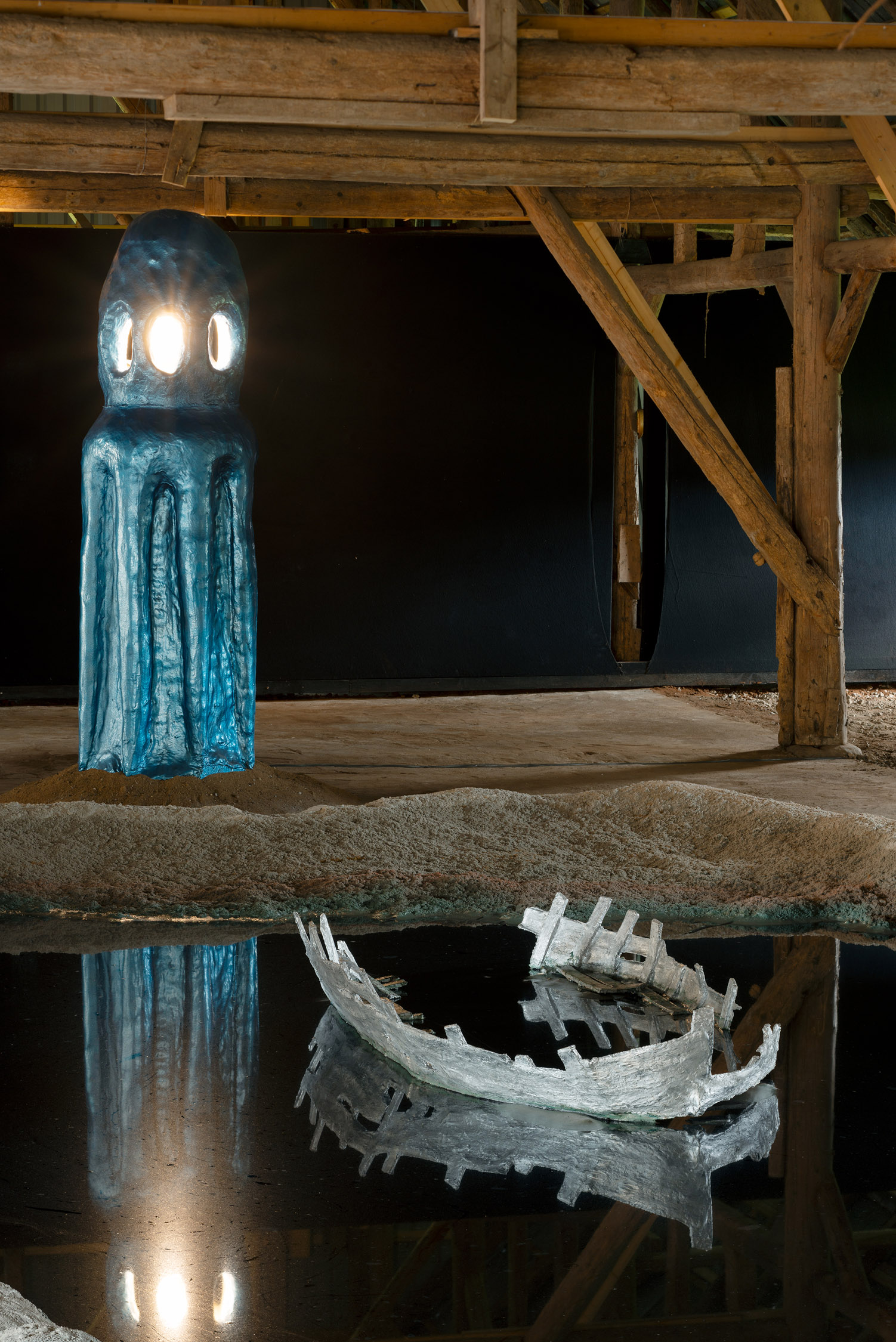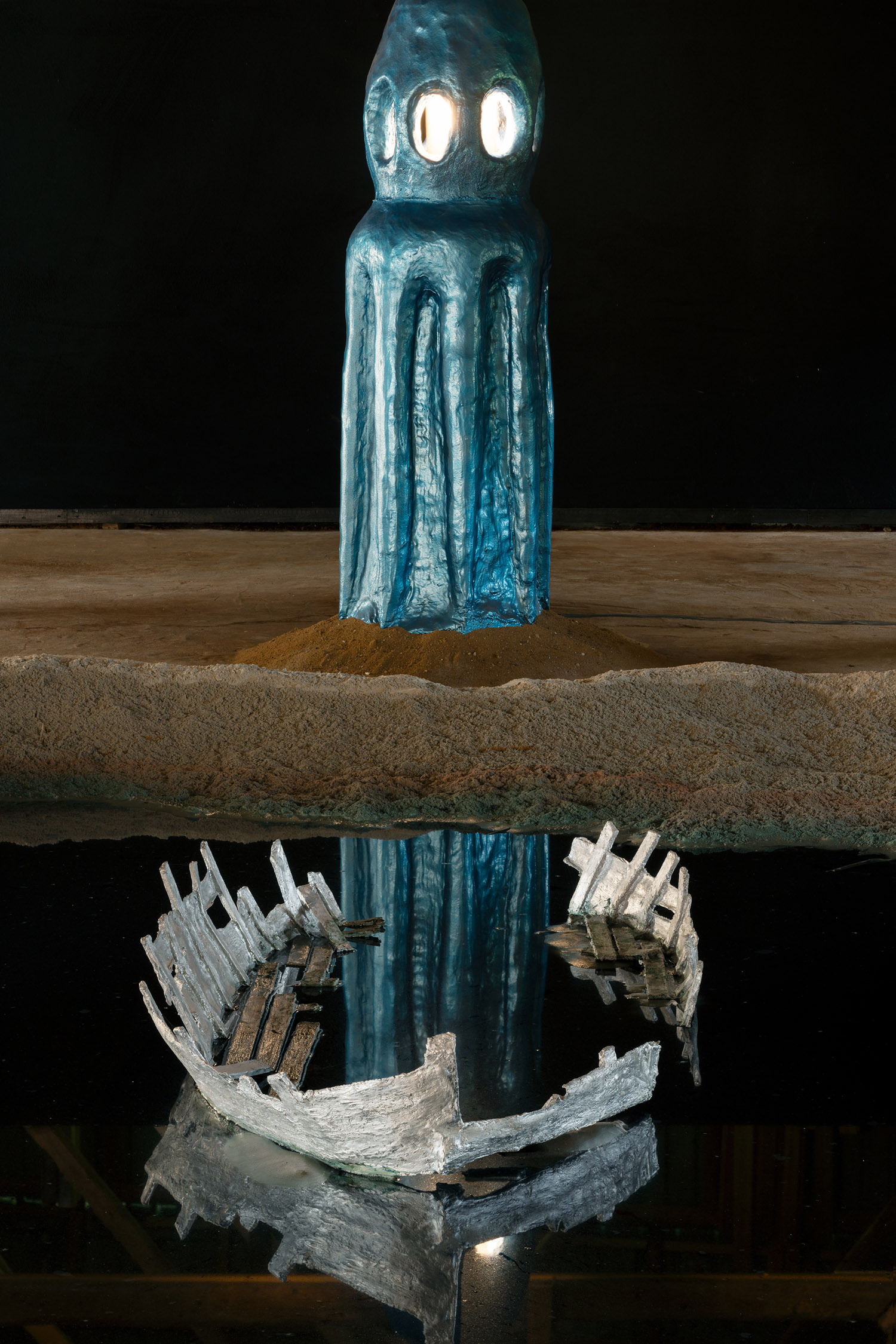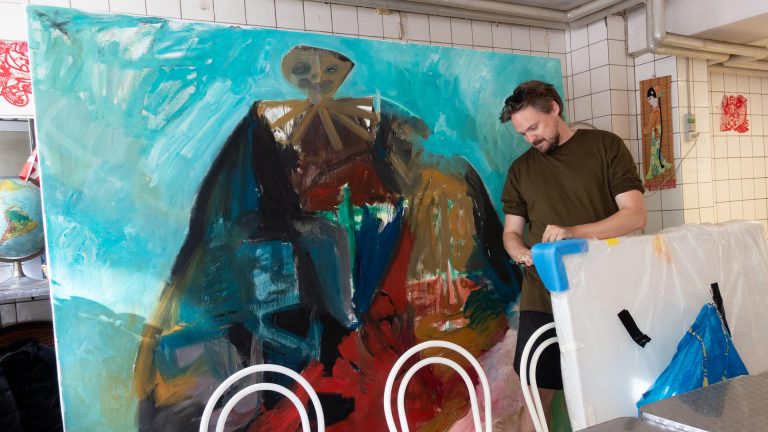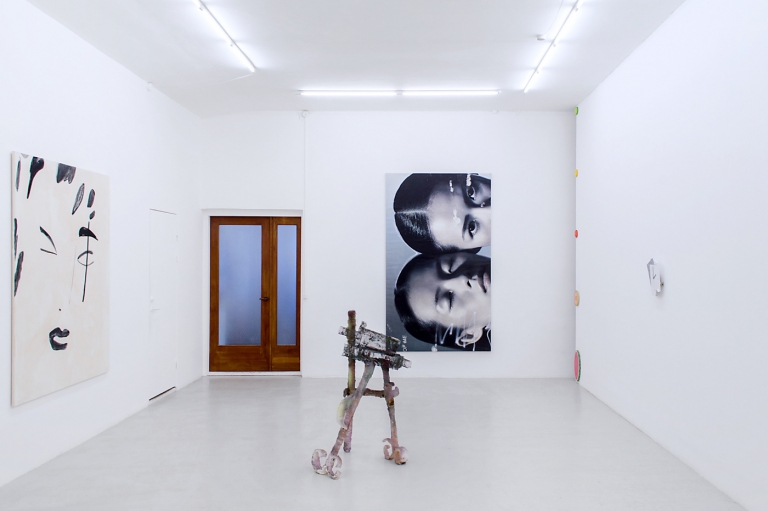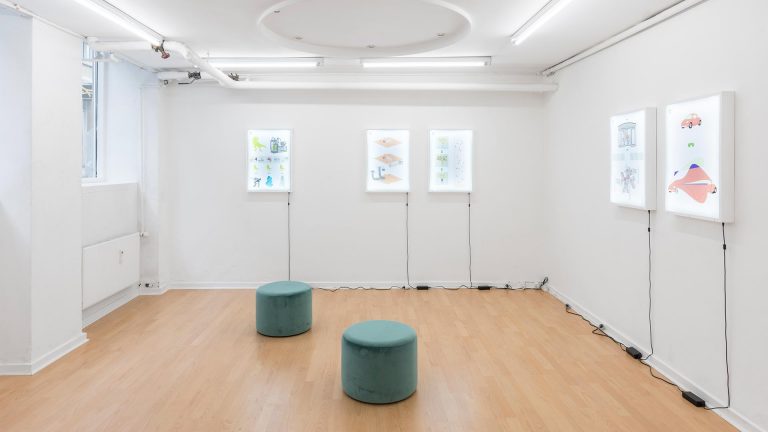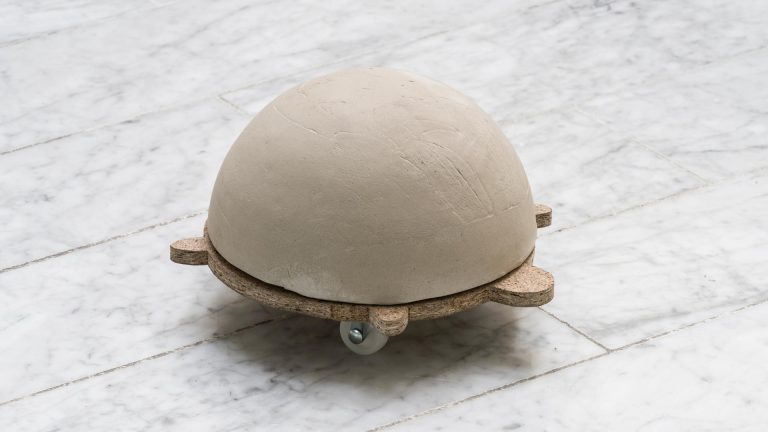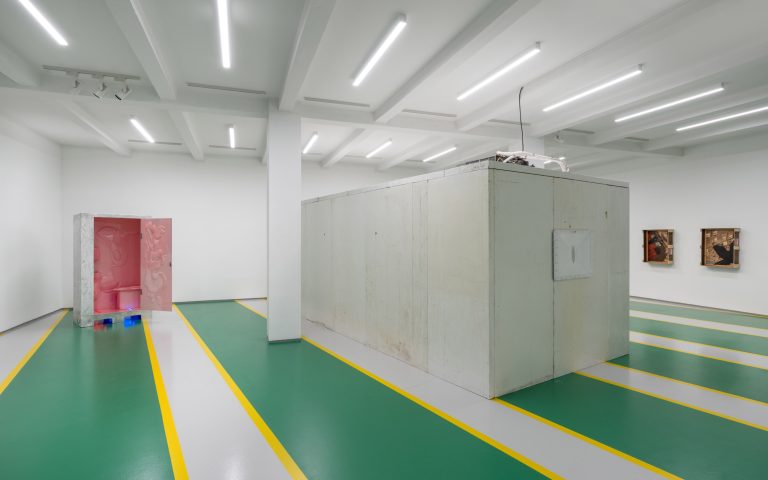Anna Bak delves thoroughly into the relationship between humans and nature. A particular focus of her historical and cultural research is the stories people have always invented to establish a connection with nature. A good example of this is Anna Bak’s sculpture of two swallows hanging from the beams at Kunsthal Thy. Sailors use them as a symbol. Like swallows, they themselves travel around the world and always return home.
The sea is dark and vast. It is calm and deep. It is tempestuous and unruly. It ends with the landmasses it encounters. It laps onto sandy shores, crashes against steep coasts, makes pebbles whisper, and washes around the rocks of the shore. The moon dictates the tides. The coming and going of the sea is determined by the constellation of the planets. Some animals can be tamed, but the sea remains untameable. It is beyond human power to influence it. It is a force of nature. Venturing out to harvest its fruits is dangerous.
The water in Kunsthal Thy is dark and still. In its reflection, the light falling through the many small holes in the roof turns into stars. Out of the darkness of the water, parts of a shipwreck emerge.
Fishermen can keep their boats up-to-date with the latest technology, train their crews well, maintain the nets, study the sea charts, and monitor the weather reports. But the success or failure of the catch and the safety of the crew do not lie solely in the hands of the captain, but also depend on the forces of nature. It is difficult to trust them and surrender to them. People who work closely with nature have always invented stories to build a personal connection with it. Stories of mythical beings that are half-human, half-animal, like mermaids or centaurs.
At the edge of the water in the art gallery lies a mermaid, one of her arms resembling the claw of a crab, her head covered by a starfish.
As Christianity spread in the western part of the world, belief in mythical beings was gradually replaced by belief in a single God, who directs all destinies. Serving this God and adhering to the rules of this god gave believers the certainty that they had done everything for their own safety. Of course, faith did not change the actual numbers of casualties at sea. However, the responsibility now lay in the hands of the believers. Did they regularly attend services, pray enough, and do penance regularly? Were all the rules actually observed, and did they abstain from alcohol, dancing, card games, or television? Nature is indifferent to this. Today, technology seems to give people the assurance that they are doing everything in their power to foresee possible dangers. It is this belief that gives us security and trust in our environment. Future generations may look back on our time and also question this belief.
A light wanders through the exhibition space. It originates from the head of a sculpture, half-octopus, half-lighthouse—half animal, half machine.
Perhaps everyone has tried at some point holding a shell to their ear and thought they heard the sea rushing inside it. In reality, it is the sound of our blood resonating in the shell’s chamber. This idea symbolically represents how the possible unity between humans and nature is a recurring human concept. In this sense, Jullie Hjetland will use a shell sculpture by Anna Bak as her resonator and let her voice resonate through it. Her singing will thus create a new vital connection between the individual actors of the exhibition.
Text by Marina Rüdiger
Anna Bak is an artist and curator. She studied at the Funen Art Academy and spent a year at Montana State University in Bozeman, USA, with a Fulbright scholarship. In 2014, she participated in the postgraduate program at Jan Van Eyck Academie in Maastricht. In Denmark, she has exhibited her works, among other places, at GL STRAND in Copenhagen, Kunsthal NORD in Aalborg, Sorø Kunstmuseum and Overgaden Institute of Contemporary Art in Copenhagen. She has exhibited at Museum Het Valkhof in Nijmegen, Studio 47 in Amsterdam, and Glucksman Gallery in Cork, Ireland. She has been on residencies arranged by the Danish Arts Foundation in Istanbul, Turkey, and the Capacete Institute in Rio de Janeiro, Brazil. In 2015, she published the book “Wilderness Survival – a guide to the aesthetics of survivalism” published by the Dutch publishing house and exhibition space Onomatopee.
Jullie Hjetland works as a musician and composer in the genres of folk, jazz, and electronica. She studied at the Carl Nielsen Academy of Music in Odense, the Royal College of Music in Stockholm, the Sibelius Academy in Helsinki, and earned her master’s degree at the Ole Bull Academy in Voss, a part of the University of Bergen. Hjetland records in various Scandinavian languages. Since its founding in 2004, she has been the frontwoman of the Danish folk band Basco and plays folk-influenced electronic music in her solo project Lukkif. With the bands of Karl Seglem and Christoph Stiefel, she has released two jazz albums. In a trio with Irene Becker and Benita Haastrup and with the group Nordens Tone, she explores the boundary between folk and jazz. Hjetland has also formed a duo with Danish musician and composer Henrik Marstal, combining elements of folk, dream-pop, and ambient music.

